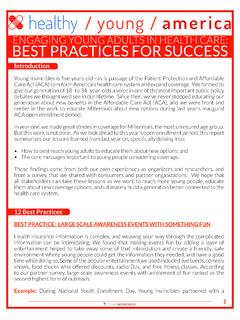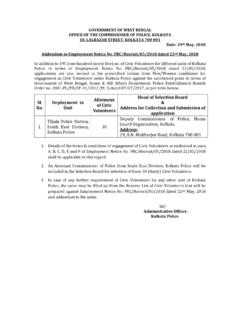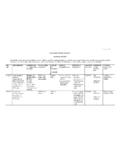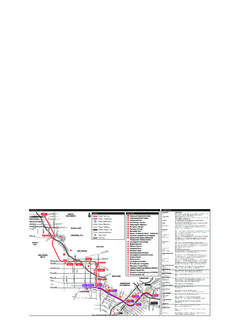Transcription of STRENGTHENING AMERICAN DEMOCRACY - …
1 STRENGTHENINGAMERICAN DEMOCRACYA Guide for Developing an Action Plan to Increase Civic Learning, Political Engagement, and Voting Rates Among College Students 2017 by Students Learn Students Vote Coalition. All rights reserved. Version 1 September 2017 Colleges and universities are leaders in cultivating generations of informed, engaged citizens needed for DEMOCRACY to thrive. With million college students in the United States, institutions of higher education have a responsibility to help their students overcome the institutional and psychological obstacles that new voters often face. Recognizing the importance of getting college students more engaged in our democratic processes as well as the need for hard data on how to do that the Students Learn Students Vote (SLSV) Coalition was formed to increase student voter engagement by building data-driven approaches. The Coalition is made up of nearly 200 nonpartisan national, state, local, and student organizations dedicated to finding and scaling data-driven approaches to improving democratic engagement among college students.
2 It is managed by Young Invincibles, a Millennial research and advocacy organization that works to expand economic opportunity for young adults. Throughout 2016, SLSV Coalition Partners worked with more than 168 campuses. From integration of voter registration tools to providing model campus engagement plans to offering expertise to campuses as they assess their voting rates using the National Survey of Learning, Voting, and Engagement (NSLVE), our partners ran a number of different programs and resources to increase campus voter engagement. Looking ahead to 2018, our strategic priorities include: building leadership and skills in the field, scaling advocacy campaigns at the federal and state levels that positively impact student registration and turnout, and actively encouraging campus administrators to publicly release their NSLVE reports and refine their action plans for the 2018 elections. About the Students Learn Students Vote of ContentsForewordAcknowledgmentsAction Plans051217061318081419091520 IntroductionKey TermsThe Action Planning ProcessGuiding PrinciplesTemplate and Guiding QuestionsExecutive SummaryLeadershipCommitmentLandscapeGoal sStrategyReportingEvaluation031122022 STRENGTHENING AMERICAN DEMOCRACYIn its 2012 report, A Crucible Moment: College Learning and DEMOCRACY s Future, the Department of Education s National Task Force on Civic Learning and Democratic Engagement called for higher education to reclaim its civic help in this reclamation, the Students Learn Students Vote (SLSV) Coalition was formed in 2015.
3 This coalition comprises groups of nonpartisan organizations dedicated to helping college faculty, staff, and students implement data-driven strategies for increasing civic learning and democratic engagement. With the common mission of ensuring a more representative DEMOCRACY , SLSV Coalition partners work in collaboration with higher education institutions to increase the number of college students participating in local, state, and federal elections. Though the National Task Force and the SLSV Coalition believe that higher education has a responsibility to graduate civically informed and democratically active students, research shows that less than half of voting eligible college students routinely participate in federal elections. While voting is only one indicator of civic engagement, it is fundamental and measurable. The National Study of Learning, Voting, and Engagement (NSLVE) found that percent of undergraduate students, at 1,023 higher education institutions, voted in the 2016 presidential elexction percentage points lower than the national rate among all eligible voters in that election, though percentage points higher than in 2012.
4 We owe it to students, and society, to do a better job. Higher education needs to play a more active role in graduating civically informed and democratically active students students with the knowledge, skills, and values to solve the country s most pressing problems and who understand that in order to have a strong and truly representative DEMOCRACY , they need to participate. We hope you find this guide useful and that it makes the work you do with students easier. It was developed based on best practices and informed by our collective experience in higher education and political organizing. We look forward to your feedback and thank you for all that you do to educate the next generation of civically informed and democratically active Plans4 STRENGTHENING AMERICAN is a tool designed to help faculty, staff, and students write strong action plans to increase civic learning and democratic engagement on college and university campuses.
5 It provides a framework for developing and documenting institutional goals and strategies. It is not meant to be prescriptive and should be adapted to your institutional context. Completing the action planning process can help an institution assess current efforts, set goals, plan and implement activities, assess progress towards goals, and continuously work to improve civic learning and democratic engagement efforts. It is suggested that this work be collaborative and occur in a team setting. Depending on the campus, this may be accomplished in a committee, coalition, task force, or working group. The hope is that through this process, the institution will be able to garner additional support and resources, change culture, improve systems and policies, build lasting capacity, and ultimately institutionalize is strongly suggested that the completed action plan be shared on the institution s website, along with its National Study of Learning, Voting, and Engagement (NSLVE) report.
6 Together, these demonstrate an institution s belief in transparency and its commitment to broadening and deepening civic learning and democratic AMERICAN DEMOCRACYA ction planning is a group exercise, not an individual task. For best results, choose a leader to facilitate the process. The leader may be internal, though an external facilitator can provide a neutral voice in LEADER(S)A team helps establish a collective vision. Assemble a diverse team representing appropriate constituent groups, internal and external. Those involved should have clear expectations of their A TEAM AND DEVELOP A TIMELINEThe following steps are a guide for carrying out the action planning process in general. These steps can be used for any initiative and should be amended to work within an institution s what is already occurring, and to what extent, allows for discovering strengths and areas for setting provides a roadmap to achieving desired results.
7 ASSESS CURRENT WORK AND OUTCOMES SET GOALSAn action plan is a roadmap that documents specific strategies for starting new programs and initiatives, or improving existing ones. It takes goals and breaks them down into steps so that desired results can be achieved. It is a documented strategy to meet objectives, as well as to increase efficiency and accountability. Action planning is the process used to develop and document the action Action Planning planning activities assists in accomplishing goals. Intentionally design activities to achieve goals. PLAN WORKM obilize resources and execute the plan allows for making adjustments along the way if progress is not being made towards goals. If change was successful, how can it be expanded? If change was not successful, what adjustments should be made? Revise the plan to ensure plan may take a few years to complete; therefore, it should be reviewed at least yearly to ensure that progress towards goals is being made.
8 Use data to analyze the impact of activities and determine next improvement is a process that requires frequent review to ensure desired goals are PLANREVIEW THE PLANASSESS PROGRESS TOWARDS GOALSREPEAT An action plan captures the goals and activities in PLAN8 STRENGTHENING AMERICAN DEMOCRACYA ctivities should focus on local, state, and federal elections; include election and non-election related programming; and be politically neutral. Activities should focus on registering, educating, and turning out student should occur across campus and reach all should be curricular and should improve existing efforts and include new and original should occur every semester or term of every year, not just during an election cycle. CONTINUOUSA ctivities should not be marginal or add-ons. They should be embedded in the curriculum and co-curriculum of the campus and tied to the institution s learning and goals should be informed by principles should be kept in mind as the institution develops its action plan.
9 A strong action plan, designed to increase civic learning and democratic engagement among college students should be:Guiding Termsis promoting the education of students for engaged citizenship through democratic participation in their communities, respect and appreciation of diversity, applied learning, and social learning and democratic engagement is civic engagement that involves democratic processes ( , when an organization puts a matter to a vote and there is democratic participation).Democratic participationis any act intended to improve or influence a community through deliberation, collaboration, and reciprocal relationships and community-building. Civic engagementis civic engagement that emphasizes governmental institutions and/or power ( , voting in a local, state, or federal election). Political engagement or political participationis the act of casting a ballot, in any manner ( , early, in person, absentee).
10 Voter turnoutis the process of successfully completing the application to be able to cast a ballot in an registrationis the curricular and co-curricular activities offered to students and designed to facilitate civic learning and increase participation in educationDefinitions of frequently used terms are included to provide a common understanding of terminology used within higher education and this and Guiding Questions12 STRENGTHENING AMERICAN DEMOCRACYE xecutive SummaryIThis section provides a summary of the action plan. Just one to two pages in length, it should be clear, concise, and allow the reader to easily understand what the campus is doing and why. It distills the plan into just a few pages so that the reader can rapidly become acquainted with the action plan without having to read it QUESTIONSWho developed this action plan?What is this action plan for and what does it seek to accomplish?







